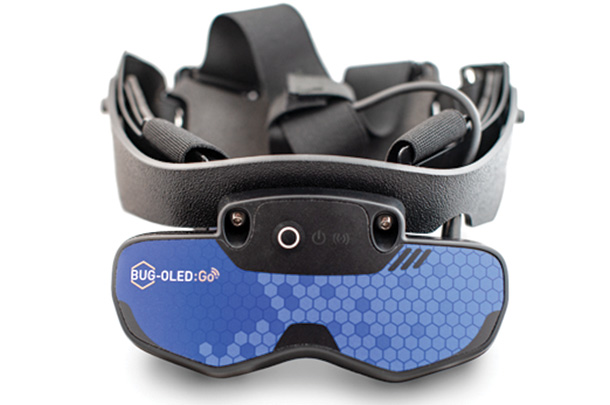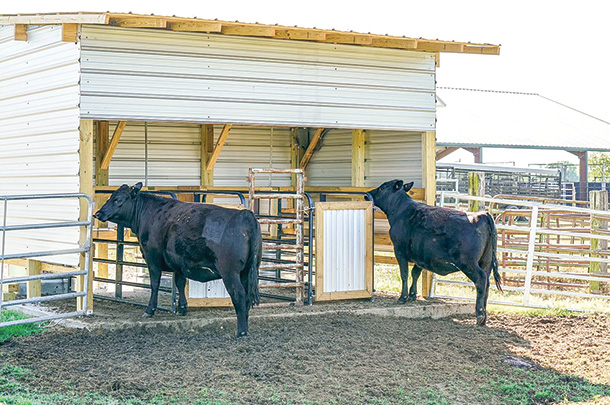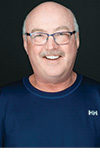The beef industry is constantly experiencing new and exciting advances in precision technology aimed at livestock health, management and production efficiency.
Here are three companies and products making inroads in their own unique ways.
IMV Imaging
IMV Imaging, a Scottish-based company, is offering a technologically advanced product to veterinarians and cattle farmers in the form of wireless goggles for ultrasound pregnancy testing.
 The BUG OLED goggles capture clear real-time fetus pictures with no lag time. Photo courtesy of IMV Imaging.
The BUG OLED goggles capture clear real-time fetus pictures with no lag time. Photo courtesy of IMV Imaging.
Their North American sales and service office located in Rochester, Minnesota, sells the BUG-OLED: Go goggles which work together wirelessly with their Easi-Scan: Go ultrasound unit and probe equipment. Together, they capture clear real-time fetus pictures with no lag time. Images can be displayed on a tablet, computer or smartphone.
Tom Cardinal, IMV Imaging sales specialist, says the unit’s main use is preg checking cattle, although its abilities are varied.
“We can visualize the fetus, heartbeat, check ovaries for cysts, see embryo transfers and scan ovaries to identify an animal’s cycle status, all while moving around with increased mobility. The equipment can be used in bright or dark, wet or dry conditions.”
He suggests not dealing with a cable running from the ultrasound machine to the goggles is the biggest benefit for farmers and veterinarians. The device transfers images up to a 75-foot range.
The Easi-Scan: Go ultrasound machine creates a true Wi-Fi signal acting as its own hotspot for the wireless goggles, allowing the connectivity to function even in the most remote areas.
“It’s a direct connection, not like when we’re using an on-farm ultrasound,” Cardinal says.
“Images are 100 percent true and accurate, just like completing one at a doctor’s office. Errors normally occur due to interpretation inconsistencies and user error. Seeing a fetus of 3 or 4 months is much easier than one at 30 days of pregnancy, which is only the size of a fingernail. For this reason, operator experience and probe placement are still critical to confirm accuracy.”
Cardinal suggests customers contact IMV Imaging through the website to discuss specific needs. The company offers a free trial and demonstration to help buyers understand the benefits, determine the cost and potentially use the gear before making purchasing decisions.
C-Lock Inc.
C-Lock Inc., a South Dakota-based company specializing in monitoring, analyzing and controlling cattle biological parameters, manufactures a “Smart Feed” line of products to assess consumption intakes. Beyond conversion rates, intake levels and efficiencies, their equipment pushes the boundaries by providing critical health information and notifications of sickness.
Jeff Clark, C-Lock’s business development and sales representative, says that in the past, feedlots have relied solely on cowboys and pen riders to identify illness. Even with experienced workers, symptoms are often recognized only after clinical signs are displayed. By determining which animals are eating normally and which aren’t, the Smart Feed equipment identifies sickness earlier.
“We already have technology to generate lists for checking. This helps to ensure issues don’t slip through the cracks,” he says. “Plus, it helps identify some of these cattle earlier, saving money on the treatment side and keeping them in good health, gaining weight.”
The Smart Feed system is essentially a bunk with electronic cells weighing the feed. Animals wear RFID tags, and a bunk reader identifies them individually as they place their head inside to eat. An entry and exit weight are taken to determine how much each individual is consuming. Data is sent wirelessly to a cloud-based user interface where it is accessible from a smart device.
“Our system monitors intake so we see all the cattle in real time, how they’re performing and eating. Alerts highlighting specific eartag numbers can be pre-set showing individuals backing off feed or losing weight. These can then be checked.”
Clark notes their customers relate how often one to two days before animals show clinical signs of sickness, they’ll start to decrease feed consumption. Thanks to these alerts, they’re able to have pen riders quickly pull these cattle, run them through the chute and temp them, even though they may not look sick. They can be treated earlier than having to wait for clinical signs to appear. Occasionally, a less expensive and milder treatment might be used.
ClicRtechnologies
“ClicR is a scaleless weight solution using 3D imaging cameras, RFID tags and readers, computer science and machine learning to identify individual weights and keep track of animals,” says Sergio Monge, global sales manager for ClicRtechnologies. “With our equipment, we do this all while cattle are in their natural state having a drink of water.”
 These cattle are at Abraham Baldwin Agricultural College in Georgia where ClicR has their system set up for research purposes. Photo courtesy of ClicRtechnologies.
These cattle are at Abraham Baldwin Agricultural College in Georgia where ClicR has their system set up for research purposes. Photo courtesy of ClicRtechnologies.
ClicR’s hardware is installed around a water source. When an animal enters the designed enclosure to drink, the computer activates, identifies the animal by its RFID tag and begins taking pictures. Depending on how long they drink, between 100 to 200 photos are snapped. During a 24-hour cycle, approximately 500 pictures of each animal are taken. Using artificial intelligence (AI), an algorithm calculates a daily weight by comparing measurements and relating them to the 3D composition of the camera’s perceived world.
A cloud-based server sends the weights through a user interface to a dashboard where a farmer uses a phone, iPad or computer to access an inventory of individuals and their weights, average daily gains (ADG) and other performance indicators.
Monge explains the system is adaptable and built to recognize various breeds based on a producer’s specific profile and input. Weight targets for market delivery can also be programmed, with the equipment marking an animal with spray paint when desired weights are reached.
“The beef industry is doing their best to avoid stress in all situations,” Monge says. “Not everyone has a typical scale, plus those [who] do use excess labor and create risk while handling livestock. ClicR changes the way cattlemen make decisions based on knowledge and data, available 24-7 in the palm of the hand with just a click, all while taking a positive step toward improved animal welfare.”
Now is an exciting time for the beef industry with many technological products and options entering the picture. Like never before, farmers and ranchers have access to opportunities for advancing their marketing, productivity and efficiency.








